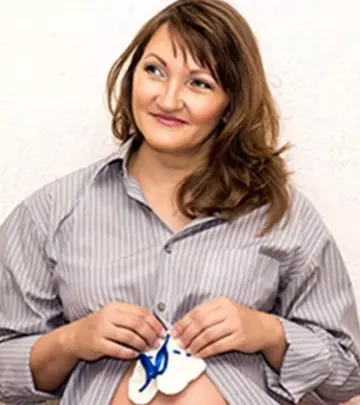
Image: Shutterstock
Your age might not be a concern for your child. But it might be something to be considered if you wanted to be a mother. To become a mother at the right age is important for the well-being of both your child and you. It’s not simply being physically conducive to let your baby pop out of you. There are socio-economic factors, factors that count your personal health, the emotional well-being, your profession among other things.
What happens when you decide to have a baby after you are forty? To have no care is quite nice. But is it wise to have no care till you are that old?
The pros are
- You are mentally mature
- You are much stronger a person
- You are wiser
- You are more caring
- You will be stronger financially
- You have had ample time to have fun in life, travel, pursue your dreams before giving birth.
The cons are
- You are physically weaker
- There is general belief that childbearing isn’t as easy now
- You will lack the energy of a younger mother to run around or play with your kids
- You will have less patience
- You would be quite an old guest at your grown-up child’s graduation ceremony
- You would be quite ‘left out’ when your children move out of the nest.
- You will have grown older when you think you want to holiday with your partner
- You will have less help and support. All you will have is the tardy help from your partner who would have grown old like you, or older than you.
Women who find themselves associated with the world of glamor are extremely career-oriented or women seeking authority usually procrastinate having children. And so do the young women following in their footsteps. Look at the number of celebrity moms who gave birth after 40 – Gwen Stefani, Salma Hayek, Brooke Shields, Celine Dion among others…they all have carried motherhood incredibly well. But some of them have had to struggle towards becoming a mother, for some it had turned out stressful, and to some, it was easy as pie.
It turns out that each of them has had a different experience. But the underscoring point is that each of these women wanted to be mothers, they became one, and they don’t regret the decision.
Keeping aside the personal choices, if one had to revisit the ability of women to bear a child after 35, then the controversial book written by psychologist Jean Twenge argues that the fertility issues of older women are usually blown out of proportion and based on “hopelessly out-of-date statistics.” Further to this, a U.S. study supports the argument with some startling figures. Apparently 80% of women aged between 38 and 39 get pregnant naturally within six months of trying.
While writing the book, Twenge made an observation in the medical statistics that only 2 out of 3 women aged 35 could become pregnant after a year of unprotected sex. What made the statistics startling was that they were drawn from the church birth records in rural France dating between 1670-1830. Considering that women now are vastly different from the women then and the access to better medical care and improved diets, the past statistics may no longer hold good!
Another study revealed that at least 78% of Danish women aged between 35 and 40 got pregnant within a year of trying to conceive, especially when they had intercourse during their most fertile periods.
Interestingly the need for having children is also associated with keeping a marriage or a relationship successful. But it also puts social pressure on women who are 30 or 35 plus who have had no children but are expected to raise a family.
Having children is certainly a personal choice. The recent studies that women can conceive after 35 or at 40 also raises the bar from the biologically and socially accepted norms of the age when a woman must conceive. This is regardless of the socio-economic factors. However, there is just the weeny bit of advice – no matter what age you become pregnant, ensure that it leads to responsible parenting!












